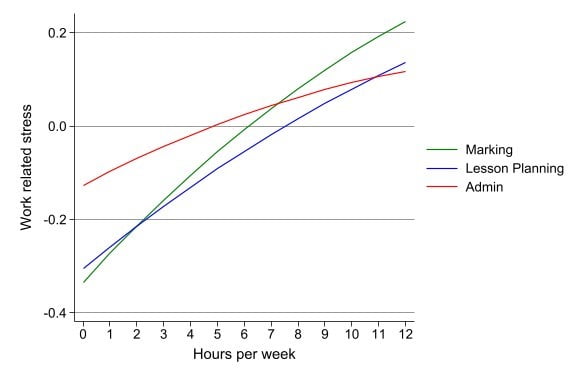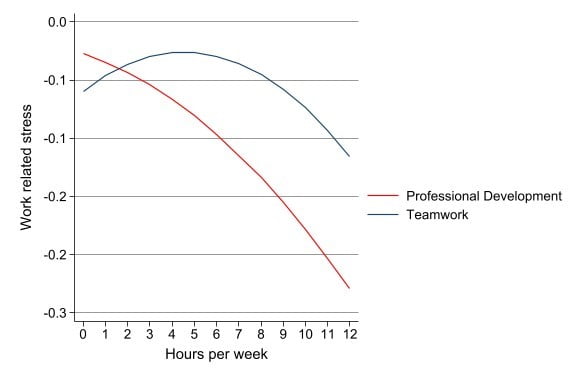Dr Sam Sims has just joined the Teacher Development Trust as our new Research Advisor. He writes for us here on some exclusive new research findings from the OECD Teaching and Learning International Survey.
TDT’s Culture of Improvement working paper shows the important role that school working conditions play in developing and retaining great teachers.
One aspect of school culture that gets a lot of attention in the education press is workload. This is not surprising given that teachers in England work around one day per week longer than the OECD average.
But there’s a puzzle. Some research finds that workload is related to job satisfaction, stress and retention. While other research does not. If an additional hour of work is contributing to pupil attainment, then we might also consider it a good thing. So what should school leaders make of this apparently conflicting evidence?
A leading theory of workplace motivation and burnout suggest that the type of workload really matters. Hours spent on tasks seen as a distraction from teaching and learning (‘job demands’) have a negative effect. Hours spent on tasks that help teachers improve (‘job resources’) have a positive impact.
We can test this using data on 2,913 full time teachers in England from the latest Teaching and Learning International Survey.
The horizontal axis of the chart below shows the number of hours teachers spend on specific tasks. The vertical axis shows the TALIS summary measure of teachers’ work-related stress and wellbeing – zero represents average stress and a higher score reflects higher stress.
The three lines show the expected level of work-related stress as we vary the amount of time teachers spend on a specific task, while holding constant the amount of time that they spend on all other tasks.
Consistent with findings from qualitative research, marking, planning and admin all show a clear negative association with work-related stress and wellbeing. If anything, marking comes out worst.

What about tasks that might be considered ‘job resources’? The chart below shows that the relationship is flipped entirely. Holding other workload constant, extra hours spent on professional development or collaborative working are associated with an improvement in work-related stress and wellbeing. Just as the theory would predict.

All this suggests that school leaders should focus on replacing bad work with good work. The Workload Advisory Group has made helpful recommendations on how to cut the amount of admin associated with data management in schools. Likewise, the EEF is due to publish a new guidance report which should clarify how to get the best return on time spent marking.
The time saved on these tasks should then be invested in high quality professional development, which should improve teaching and learning. I am currently working on a systematic review of effective professional development for the EEF, which is due to be published in September this year. Watch this space.
Thanks to Nicholas Winter who wrote the ‘combomarginsplot’ Stata command used to make the charts in the blog

